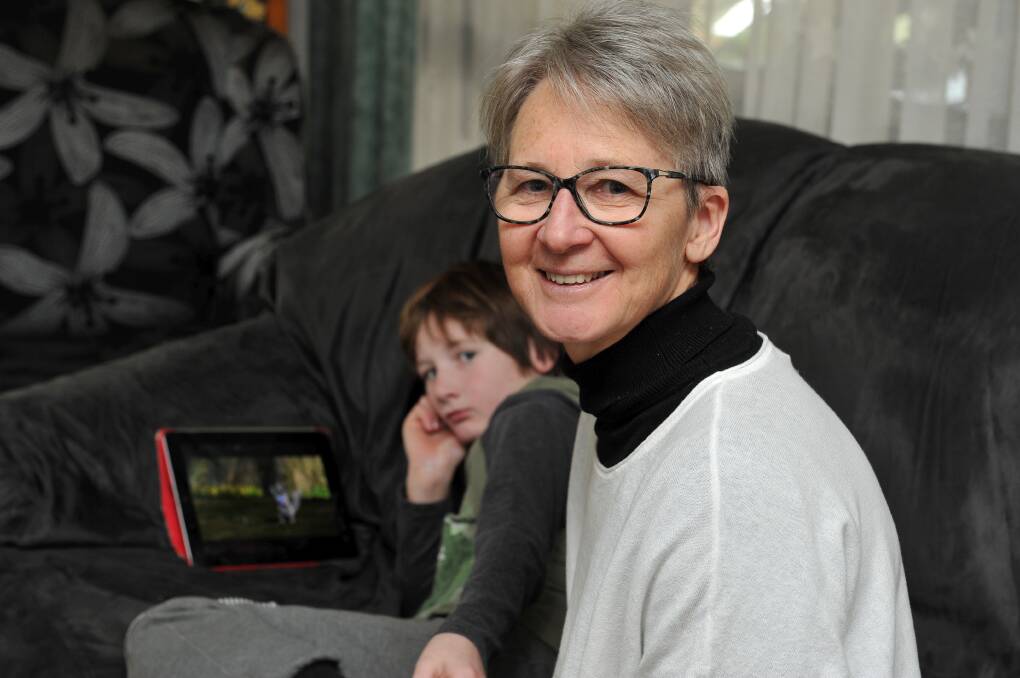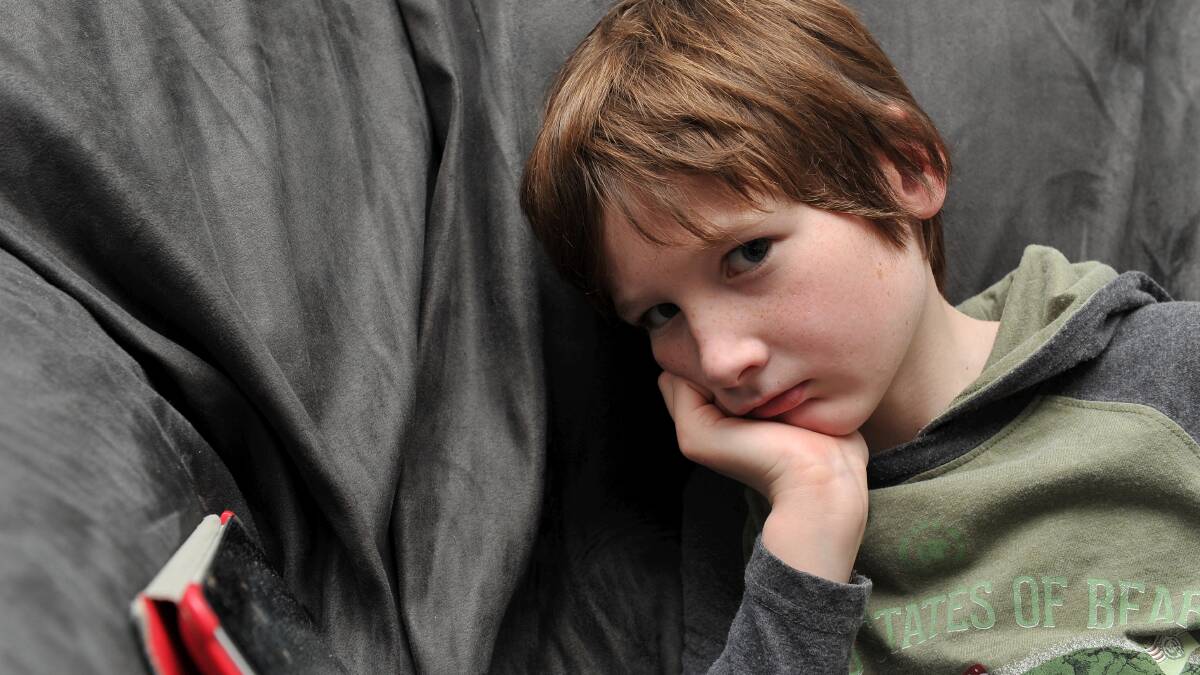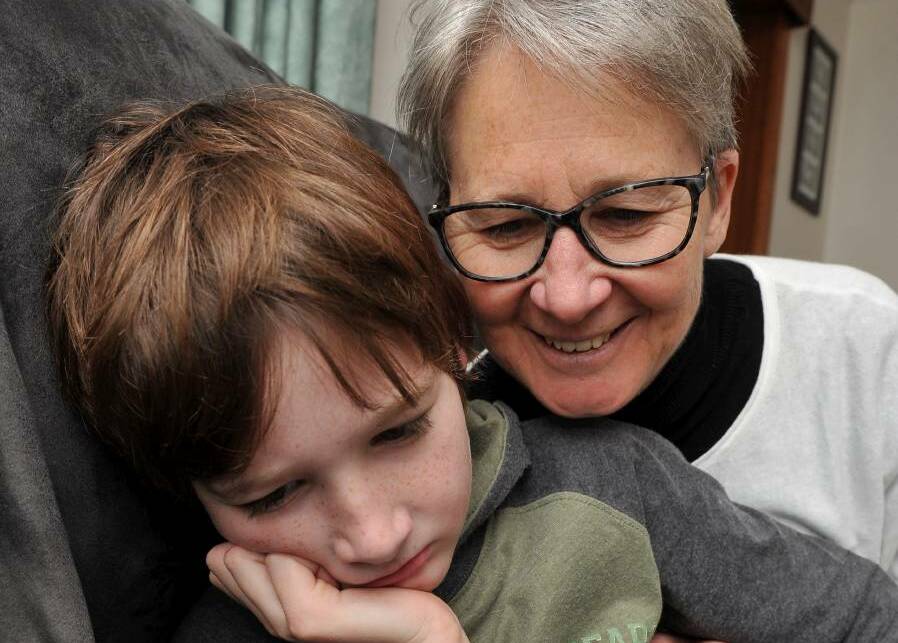
Before she had her son Jaspa, Deb Robertson queried whether Attention Deficit Hyperactivity Disorder actually existed.
Subscribe now for unlimited access.
$0/
(min cost $0)
or signup to continue reading
A former secondary school PE and science teacher across several Ballarat schools, Ms Robertson said ADHD did manifest as a “naughty child”.
But since having Jaspa, who has ADHD, she now looks back and recognises that “I had them in every class”.
“(Having Jaspa) changed my approach to my teaching straight away,” Ms Robertson said.
“I was recognising where the kids were coming from. The system was hindering them, not helping them.
“They need to be treated as individuals. The staff needed to be given the skills to look at their strengths and the way they learn.
“There needs to be a real awareness of those characteristics brought out by ADHD.
“ADHD needs to be accepted as real. No child wants to be in trouble but it is a constant with them. If they could change that, they would. Even if it is seeking negative attention, we need to sit back and ask why do they need the attention?”

Ms Robertson said primary schools and universities were becoming better at dealing with ADHD but secondary schools were still struggling to meet the childrens’ needs.
“They are asking teachers to (be inclusive) in a system that works against the principle in practice.”
She said moving from class to class and teacher to teacher were big issues with children who don’t like transition and change, and need clear boundaries and structures.
“The education system tends to value one type of intelligence over another.
“Physically and structurally it isn’t designed universally to cater for such a variety (of students).”
Ms Robertson said she changed her teaching approach to try and look at the students with ADHD more individually.
“They have to move to learn, to focus. So if I didn’t pick the movement, they would choose it and it usually would be negative.”
And she said she tried to get rid of the idea of the teacher having complete control and what a class should look like while it’s learning.
“They don’t have to be paying undivided attention to what’s happening up the front.”
She said she also tried to break tasks up and give them different options of how they could display competence.
“I would establish with them a set standard of expectations and concentrate on the positives they did and downplay the negatives. Even if they were sitting for five minutes I would note that and say thank you.”
One-on-one support helps Jaspa thrive

Deb Robertson knew her son Jaspa was different from “the word dot”.
“He crawled at five months, walked at nine months – he was on the go straight away,” Ms Robertson said.
“We tended to describe him as ‘busy’ but then he started to have issues in daycare and kinder with his interactions and his impulsiveness.
“He had his tonsils and adenoids out, hearing tests, behavioural tests, a behavioural intervention diet but not a lot changed.”
Midway through Jaspa’s prep year he was referred to an infant mental health specialist, leading to a paediatrician diagnosis of Attention Deficit Hyperactivity Disorder.
“It was the best thing that happened to us. We (Deb and husband Barry) were both at the end of our tether but we were able to get help. One of the hardest things is it’s so constant.”
However, the Robertsons have had an excellent educational experience with Jaspa’s school, St James Parish Primary in Sebastopol.
“From the word go, they’ve been fantastic. They really do value every child individually.
“They bent over backwards, they were constantly in contact and constantly trying lots of different options but nothing was working.”
Then the Catholic Education Office stepped in and Jaspa started receiving intensive one-on-one help.
“They were really addressing his needs as an individual.”
Jaspa, who still couldn’t read up until grade three, has now brought himself up three levels halfway through his grade four year and is thriving academically with the extra support.
And that is what Ms Robertson – who is also a teacher and now completing a PhD on ADHD – believes is essential. “The whole paradigm of the education system has to change.”
Best way to learn sought
DEB Robertson wants one thing from her PhD thesis – to narrow down the most effective learning environment for children with ADHD.
“I want to look at the secondary area because it appears that this is where the need for the most change exists,” Ms Robertson said. “I want to identify the schools that are doing well … and could they be implemented on a larger scale.”
Ms Robertson is currently in the reading stage of her thesis while also visiting specialist inclusive primary schools in Melbourne.
“My biggest issue is you want to change things but you have to narrow it down to which one is the main priority. If we can change things for these children then it could benefit a broad range of children.”
Ms Robertson said one of the biggest things that surprised her was the difference between integration and inclusion. “Schools do integration well but not inclusiveness. The system is not meeting their needs.”
She said there were several things schools could do to help children with ADHD.
“It’s complex because of the co-morbidity (of other illnesses such as anxiety) but the biggest first step is a complete understanding it is a real condition. There is still a stigma to get past and that’s whether it exists or not. Regardless, the consequences are real for the kids and you as a teacher.
“You have to realise their behaviours, the impulsiveness, the low emotion control, the low social age, the short attention span and the need to move are not choices. You have to accept they are not always making fully informed choices or decisions.
“It’s like a blind person can’t see, they can’t not move. You have to work with them to try and develop strategies to cope with these circumstances
She said teachers should work on a strength-based approach and include reward programs – “concentrate on the things they do well and keep pushing good behaviour and, where possible, ignoring or downplaying bad behaviour”.
“Set a clear and consistent structure and get the child involved in developing them. They really need visual reminders, not of what they can’t do but what they can.”
Ms Robertson said teachers need to accept the children need to move to focus, to think and to learn. She suggested items such as fidget toys, exercise bands, different seating options and using two desks so they can move from one to the another. “They’ll take any chance to move that they can.”
Ms Robertson also said 90 per cent of the average day for students with ADHD should be filled with positive feedback. “You just have to be extra aware to take every opportunity to celebrate and congratulate them.”
- To contact Ms Robertson, email deboraharob360@gmail.com


